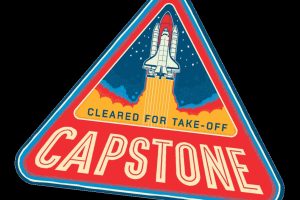
This story was originally published in the Johns Hopkins Engineering Magazine.
For students taking the Aerospace Structures course, words are not minced on the first day.
“I will treat you as I would any newly hired engineer,” says Tom Dragone, adjunct professor of mechanical engineering at the Whiting School, a program listed as No. 10 in U.S. News and World Report’s annual ranking of graduate programs, and technical fellow/chief scientist at Northrop Grumman Corp. “You will often feel overwhelmed and underprepared, which is how you commonly feel in the industry.”
Key Takeaways
With his decades of experience in the aerospace industry, Dragone takes his class of master’s students and undergraduates through the history of flight engineering, from the Wright Brothers to the space shuttle. The course culminates with a multiday, out-of-class design project related to a single aerospace vehicle structure.
Taking Wing One Step at a Time
Students learn the universal elements of aircraft engineering—functionality, load bearing, stability, durability, economy, and safety—through lectures, readings, problem sets, and a trip to the National Air and Space Museum’s Steven F. Udvar-Hazy Center.
Sometimes You Have To Fall Before You Can Fly
Dragone stresses the importance of failure—and learning from what didn’t work. By going through the evolution of terrestrial and eventual spaceflight, and having students work through exponentially challenging problem sets, they learn that failure is part of the process.
Building a Real Airplane, Not Just a Paper One
“This course gives you an opportunity to get insight from an industry perspective, not an academic perspective, which I think is really valuable,” Dragone explains to his students.
Quotes from the class
“With its emphasis on using spreadsheets to solve our homework questions, this [course’s] form of problem-solving seems more applicable to the professional engineering environment, so I thought it would be a great course to take before I start my full-time job.”—Grace Nockolds, Engr ’25, master’s student
“I am [particularly] interested in the final project, where we get to design our own wing box, and then build and test it.”—Alexander Pivovarov, Engr ’25, master’s student
“The capstone of the course is where the students pull it all together. And it’s also the most challenging.”—Tom Dragone, instructor